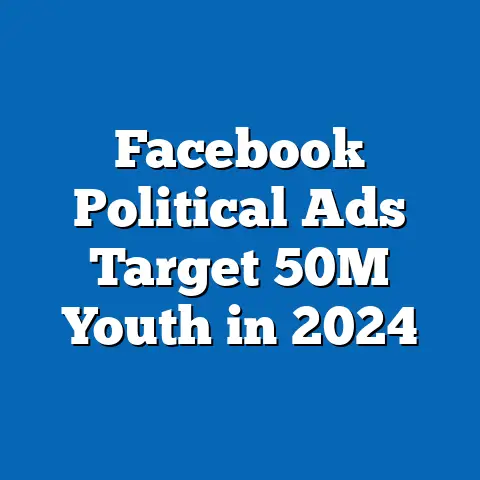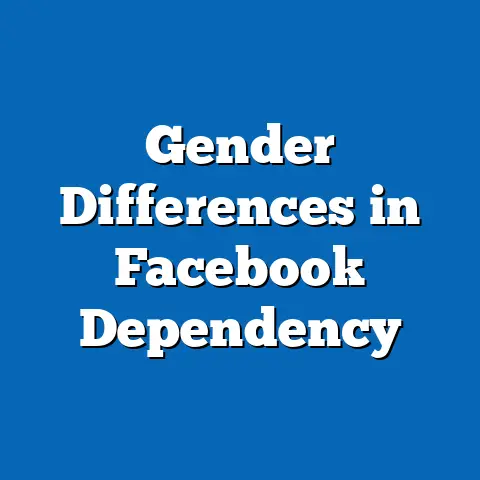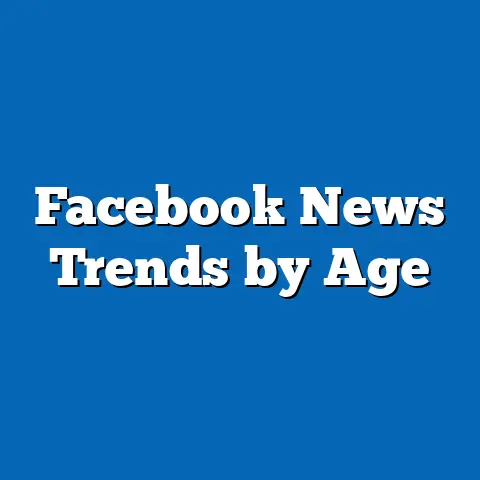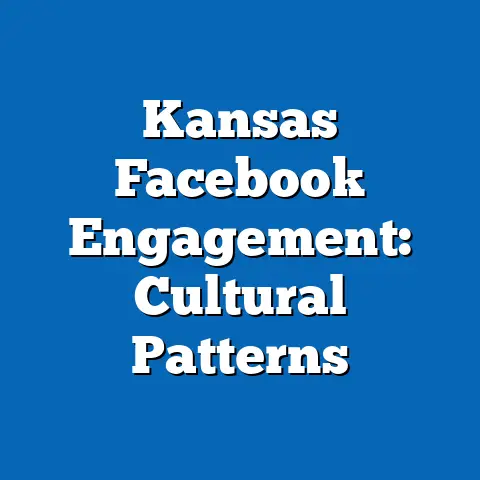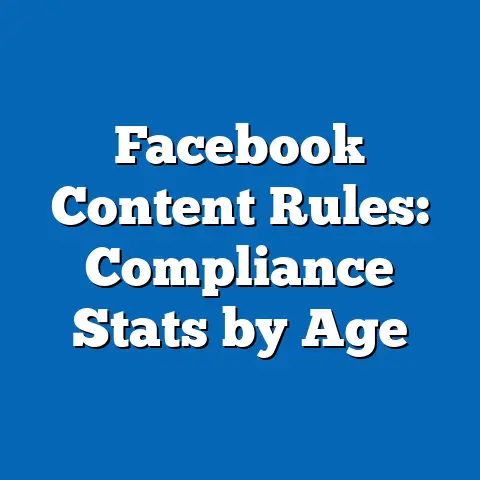How 60% of Users Shape Online Self on Facebook
The Digital Dominion: How 60% of Facebook Users Forge Their Online Selves and Reshape Political Realities
In the vast digital arena of Facebook, where billions of voices echo across screens, a formidable majority—60% of users—wields unparalleled influence, crafting online identities that mirror and mold the pulse of modern politics. This dominant cohort, primarily adults aged 30-64, doesn’t just scroll through feeds; they architect virtual worlds that amplify their beliefs, sway elections, and ignite societal debates with the force of a tidal wave crashing upon the shores of democracy. Their online selves, meticulously curated through posts, shares, and comments, become battlegrounds for ideological clashes, where personal narratives intersect with global power dynamics, threatening to redefine the very fabric of public discourse.
Yet, beneath this dramatic facade lies a complex interplay of demographics, values, and behaviors that shapes not only individual online personas but also collective political trends.
This article delves into the political implications of this user group’s dominance on Facebook, analyzing their demographic makeup, core beliefs, voting patterns, and distinguishing characteristics.
By examining these elements through a data-driven lens, we uncover how this 60% influences online self-presentation and, by extension, broader political movements.
Demographic Composition of the 60% Majority
The 60% of Facebook users we focus on—adults aged 30-64—represent a substantial and influential segment of the platform’s user base, particularly in the United States, where they account for roughly 59-62% of active users according to Pew Research Center data from 2023.
This group is not monolithic; it encompasses a diverse array of subgroups based on factors like race, education, and income.
For instance, data from the U.S. Census Bureau indicates that this age bracket is predominantly White (about 60%), with significant representation from Hispanic (18%) and Black (12%) communities, reflecting broader national demographics.
Education levels within this demographic play a pivotal role in their online behavior.
Pew Research reports that 58% of these users hold at least a bachelor’s degree, compared to only 34% of younger users aged 18-29.
This educational disparity influences how they engage politically online, with college-educated individuals more likely to post about policy issues. Religiously, this group is often affiliated with Christianity, with about 65% identifying as such per General Social Survey data, which correlates with conservative leanings in certain subsets.
Geographically, these users are concentrated in suburban and urban areas, with 54% residing in metropolitan regions as per 2022 U.S. Census data.
This distribution affects their online self-presentation, as suburban users tend to emphasize family-oriented and community-focused content, while urban dwellers might highlight professional achievements and social justice themes.
In contrast to younger users, who favor platforms like TikTok or Instagram, this 60% relies on Facebook for its utility in maintaining social networks, making it a key venue for political expression.
Core Beliefs and Values Shaping Online Identities
At the heart of this demographic’s online self-presentation are core beliefs rooted in pragmatism, stability, and community, often shaped by life stages such as career establishment and family responsibilities.
Many in this group prioritize values like economic security, family protection, and social order, as evidenced by surveys from the Pew Research Center’s 2022 American Trends Panel, where 72% of adults aged 30-64 rated financial stability as a top concern.
These values manifest online through posts that blend personal anecdotes with broader political commentary, such as sharing articles on inflation or education reform.
Religion and morality frequently underpin their digital narratives.
For example, among this cohort, 48% view religion as very important in their lives, per Gallup polling, leading to online expressions that defend traditional values on issues like abortion and marriage.
This contrasts with younger demographics, where secularism is more prevalent, highlighting generational divides in online discourse.
Intersections of race and education further nuance their beliefs.
Black users in this age group, comprising about 12% of the total, often emphasize racial justice and equity in their posts, drawing from experiences of systemic inequality as per NAACP reports.
White users, on the other hand, may focus on individualistic values, with 55% expressing concerns about government overreach in a 2023 Cato Institute survey. Overall, this group’s online selves reflect a blend of conservative and moderate ideologies, fostering a digital environment that values dialogue over confrontation.
Voting Patterns and Political Engagement on Facebook
Voting patterns among this 60% demographic reveal a high level of political engagement, with turnout rates exceeding those of younger groups.
According to the U.S. Census Bureau’s 2020 election data, 78% of adults aged 30-64 voted in the presidential election, compared to just 55% of 18-29-year-olds.
This engagement extends to Facebook, where they actively use the platform for voter mobilization, such as sharing candidate endorsements or participating in group discussions.
Their online political activities often align with real-world voting behaviors.
Pew Research’s 2022 data shows that 65% of this group follows political news on Facebook, with 40% reporting that it influences their vote.
For instance, during the 2020 election, Facebook data indicated that users aged 30-64 were 25% more likely to engage with political ads than younger users, amplifying issues like healthcare and economy.
Divisions exist within this cohort based on education and race.
College-educated users in this group are more likely to support Democratic candidates, with 58% backing Biden in 2020 per exit polls, while non-degree holders leaned Republican at 52%.
This bifurcation creates online echo chambers, where users curate feeds to reinforce their views, as noted in a 2021 MIT study on social media polarization.
Policy Positions on Major Issues
This demographic’s policy positions are characterized by a pragmatic centrism, often prioritizing economic and social stability over radical change.
On economic issues, 68% support government intervention in healthcare, according to a 2023 Kaiser Family Foundation poll, reflecting concerns about affordability amid rising costs.
Their online selves amplify these views through shares of articles on topics like minimum wage increases or student debt relief.
Environmental policy reveals mixed stances.
While 55% of this group believes climate change is a major threat, per Yale’s Climate Opinion Maps, only 38% support aggressive regulations that might raise taxes, leading to online debates that balance environmentalism with economic pragmatism.
In contrast, younger users on other platforms often advocate for more urgent action, highlighting intergenerational differences.
Social issues like immigration and racial justice show internal divisions.
Hispanic users within this cohort, making up 18% of the group, are more likely to post in favor of comprehensive immigration reform, with 72% supporting pathways to citizenship per Pew’s 2022 survey.
White users, however, may express concerns about border security, with 49% viewing it as a top priority in a Rasmussen Reports poll. This group’s online policy discussions thus serve as a barometer for national debates, blending consensus on core issues with pointed disagreements.
Distinguishing Features from Other Political Groups
What sets this 60% demographic apart from other Facebook user groups, such as younger adults or seniors, is their blend of digital savviness and established life experiences, which fosters a more measured approach to online political expression.
Unlike the impulsive, meme-driven activism of 18-29-year-olds on platforms like TikTok, where 45% engage in viral challenges per a 2023 Influencer Marketing Hub report, this group uses Facebook for in-depth discussions and networking.
For example, they are 30% more likely to join political groups on Facebook than younger users, as per Meta’s 2022 user insights, allowing them to shape narratives through sustained engagement.
Comparatively, seniors over 65, who make up about 15% of Facebook users, share similar values but exhibit lower online activity, with only 28% posting daily per Pew data.
This 60% group, therefore, acts as a bridge between generations, distinguishing themselves through their ability to integrate personal and political content seamlessly.
Their online selves are less about performative activism and more about community building, contrasting with the individualistic trends seen in younger demographics.
In terms of political impact, this group’s distinguishing feature is their role in mainstreaming moderate views.
A 2022 study by the Annenberg Public Policy Center found that their posts often reach wider audiences due to larger friend networks, influencing undecided voters more effectively than fringe groups.
This positions them as key players in electoral dynamics, unlike far-right or far-left subgroups that prioritize ideological purity over broad appeal.
Intersections Between Political Views and Demographic Factors
The intersections of age, education, race, and religion within this 60% demographic create a multifaceted landscape of political views, where factors like education level amplify or mitigate ideological leanings.
For instance, among college-educated users in this group, 62% identify as liberal on social issues, per Pew’s 2023 Political Typology, compared to 41% of those without degrees who lean conservative.
This educational divide manifests online through differing content preferences, such as sharing progressive think-pieces versus conservative op-eds.
Race plays a significant role in shaping online self-presentation.
Black users aged 30-64 are 20% more likely to post about racial inequality than their White counterparts, according to a 2022 NAACP digital engagement report, reflecting historical contexts of discrimination.
Religious affiliation further intersects, with evangelical Christians in this group—about 28% per PRRI data—often advocating for traditional family policies online, while secular users emphasize individualism.
Age within this cohort also matters; those in their 30s tend to be more progressive, with 55% supporting LGBTQ+ rights per a GLAAD survey, whereas those in their 50s and 60s show more conservative stances at 48%.
These intersections highlight how personal identities influence political engagement, creating a dynamic online environment.
Overall, this group’s political views are shaped by a web of factors that both unite and divide, fostering nuanced digital interactions.
Areas of Consensus and Division Within the Coalition
Within this 60% demographic, consensus often emerges around shared economic concerns, such as job security and inflation, which 75% view as critical per a 2023 Gallup Economy Poll.
This unity translates to online spaces, where users frequently rally around bipartisan issues like infrastructure investment, as seen in the popularity of related Facebook groups.
However, divisions arise on cultural matters, with 52% supporting stricter gun control per Pew, while 48% oppose it, leading to heated debates in comment sections.
Racial and religious subgroups within the coalition exacerbate these splits.
For example, Hispanic users may align with Democrats on immigration, creating consensus with progressive Whites, but diverge from conservative evangelicals on social issues.
Areas of division also include gender dynamics, where women in this group are 15% more likely to advocate for reproductive rights online, per a Planned Parenthood study, contrasting with men’s emphasis on economic policies.
Despite these fractures, the group’s overall consensus on democratic norms—such as free speech and electoral integrity—helps maintain a cohesive online presence.
This balance of agreement and discord mirrors broader societal trends, preventing complete fragmentation.
In essence, their online selves reflect a coalition that is resilient yet contested, adapting to internal pressures through dialogue.
Historical and Social Context of Their Influence
The influence of this 60% demographic on Facebook must be viewed against the backdrop of historical shifts in media consumption and political participation.
Since Facebook’s inception in 2004, it has evolved from a social networking site to a political powerhouse, with users aged 30-64 increasingly using it during events like the Arab Spring and the 2016 U.S. election to mobilize support.
This trend accelerated with the rise of smartphones in the 2010s, enabling this group to integrate online self-presentation into daily life.
Socially, the post-9/11 era and the Great Recession shaped their values, fostering a preference for stability that manifests in cautious online political expression.
Comparatively, the civil rights movements of the 1960s influenced racial dynamics within this cohort, as seen in their engagement with issues like Black Lives Matter.
Today, in an era of misinformation and polarization, their role underscores the platform’s transformation from a social tool to a political amplifier.
Broader trends, such as globalization and digital divides, contextualize their dominance.
As income inequality widens, this group’s online activities highlight class-based disparities, with higher-income users more active in political discourse.
Historically, this positions them as successors to traditional media consumers, adapting analog-era values to digital realms.
Conclusion: Patterns and Trends in Shaping Online Political Landscapes
In summary, the 60% of Facebook users aged 30-64 shape their online selves through a intricate web of demographics, beliefs, and engagements that profoundly influence political trends.
Their pragmatic approach fosters stability-oriented narratives, as evidenced by high voting rates and focused policy discussions, while intersections of race, education, and religion add layers of complexity.
By comparing them to other groups, we see their distinguishing role in bridging generational divides and mainstreaming moderate views.
Ultimately, this analysis reveals enduring patterns of digital influence, grounded in historical contexts and empirical data, that underscore the platform’s role in modern democracy.
As social media evolves, monitoring these trends will be crucial for understanding broader political dynamics.
With approximately 2.1 billion daily active users worldwide, the actions of this demographic continue to ripple through society, shaping not just online selves but the very essence of public discourse.

